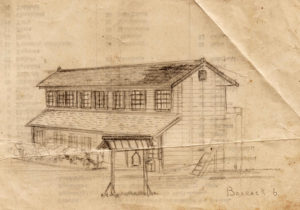Hakensho, Fukuoka sub-camp No 9, Mizumaki - Japan
Hakensho, Fukuoka sub-camp No 9 – Japan
Initially known as:
Mizumaki Branch Camp (Fukuoka 6-B)
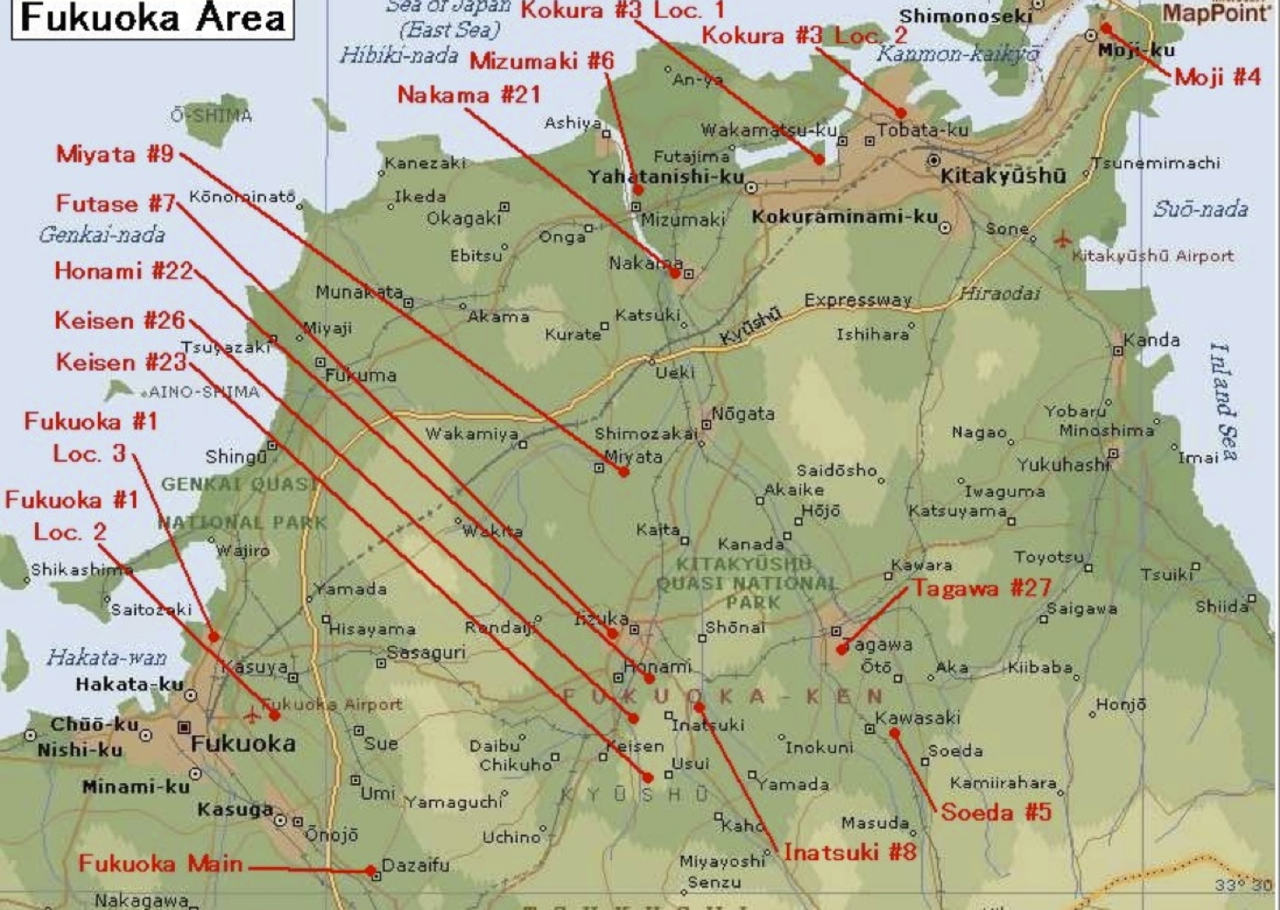

Above: map showing Island of Kuyushu
Below: Fukuoka POW Camps (from powesearch.jp)
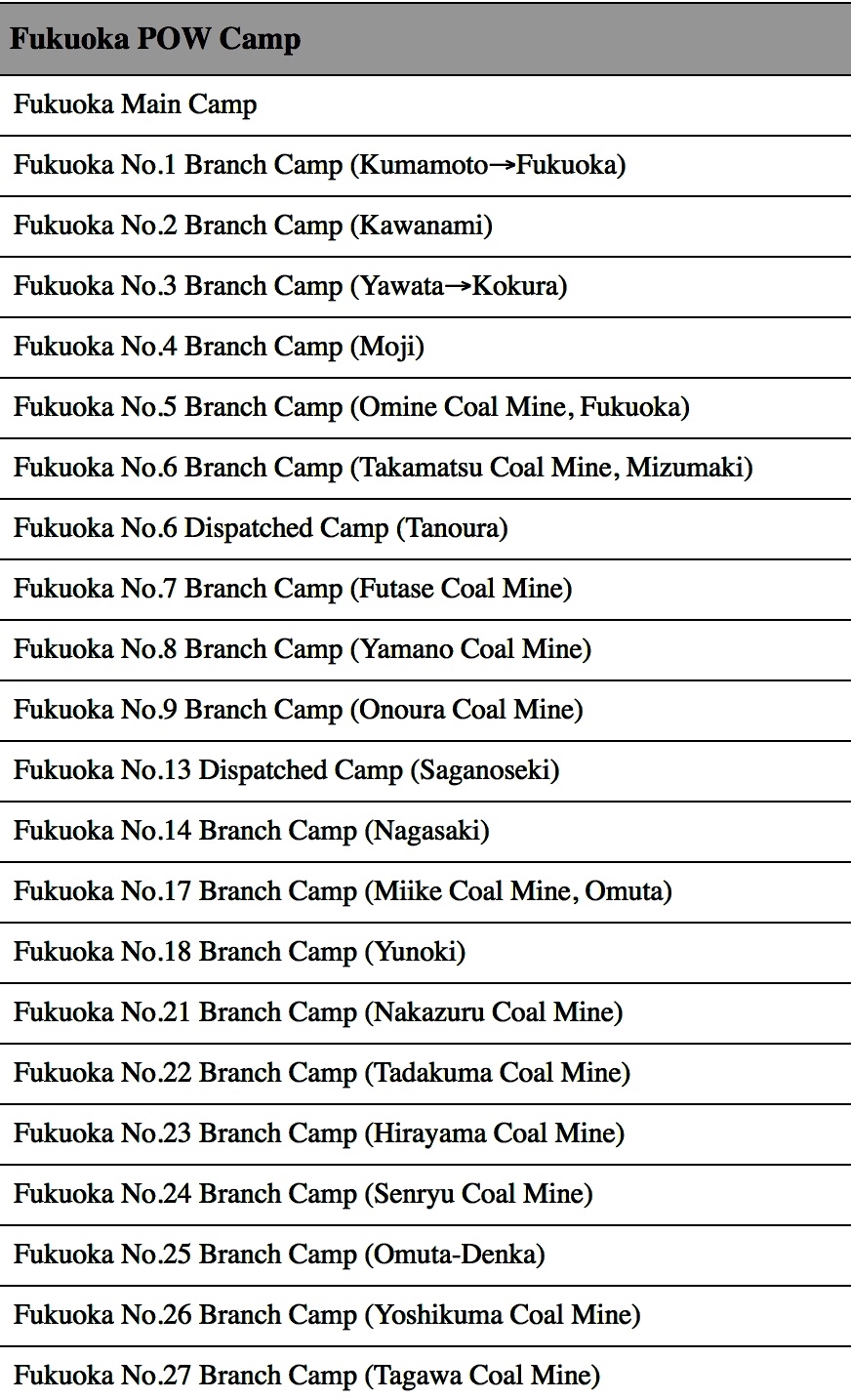
FUKUOKA SUB-CAMP NO. 9 HAKENSHO
Following the arrival of Wales Maru at Moji the POWs of ‘J’ Force were divided into three parties.
No. 1 Party was made up of approx. 150 sick and invalid. The Japanese claimed this Party was being sent to a ‘rest camp’ near Mojo. There were two machine gunners included in the 50 Australians and 150 British POWs – Roy Deveson and William ‘Pop’ Davey.
This ‘rest camp’ proved to be a coalmine! The Japanese designation for this camp was Fukuoka, Mizumaki-Cho and the mine was in fact owned by Nippon Mining Company (Nippon Kogyo).
Located on the island of Kyushu southwest of Moji, east of Nagasaki between Omuta and Kumamoto the mine was located about a quarter of a mile to the west of the Camp.
The train journey to Camp on 7th June 1943 took about two hours. The Camp was already established with a work force of Dutch, Netherlands East Indians (Indonesians) and Americans.
The British and Australians kept themselves separate from the Dutch by way of both administration and accommodation. The group moved into three barracks on the north east corner of the camp.
Discipline at this camp was strict with limited food. There were no means to scrounge for ‘extras’. No writing material was permitted. The only good news was there was only 2 ½ years remaining until the end of the war!
This mine was not considered safe to work in (as was the case with nearly all mines worked by POWs) The shafts had not been properly timbered causing several falls of rock. Cave-ins were commonplace and injuries and deaths a regular occurrence thanks to the unsafe state of the mine and Japanese incompetence.
Several POWs suffered injuries requiring amputation.
1944 gave way to 1945 and it was soon obvious the Japanese were preparing themselves for an invasion on Kyushu. The camp sat beneath the flight path of American B29’s from Okinawa as they few over on their twice-daily raids. It became an every day occurrence to see searchlights pointing skywards followed by puffs of smoke from Japanese AA bursts which were usually to low to hit the B29’s.
From this camp it was possible to see bursts of light in the distance, particularly over Moji as the American planes pulverized their daily targets.
Finally as at every other POW camp in Japan, men were informed they were now free men! The Japanese commandants at Fukuoka sub-Camp No. 9, at a loss to fully comprehend/or accept Japan’s surrender, assembled the POWs and made the following announcement.
‘Japanese Government have discussed the war with America and Great Britain and all countries have agreed to say war is finished. We know all men have enjoyed working in beautiful Japan. When you go home to your own country you will tell all your families how beautiful Japan is’.
The Kyushu skies were now free of American bombers until the morning of 28th August when a lone B29 flew over the camp dropping leaflets stating a food supply drop would be made in two hours.
The period from cessation of hostilities had not been made any easier by the Japanese guard’s belligerence either as a consequence of Japan’s defeat or by the critical shortage of food or both. The planned food drop eventuated relieving a desperate situation.
The POWs remained in camp for about a month before recovery teams reached them. They were then transported to Nagasaki by train where they witnessed the devastation caused by the atomic bomb. They boarded a U.S. Navy destroyer to Okinawa and were then flown to Manila.
In Manila Roy and ‘Pop’ embarked on HMS Formidable, happy to be with other members of 2/4th bound for Sydney, no doubt somewhat bewildered they had lived through and survived the last 3 ½ years! Both men then returned home to WA by aircraft.
It is highly probable Roy Deveson and ‘Pop’ Davey may have been included in work parties to Fukuoka sub-Camp No. 6 Hajenjo and Fukuoka sub-Camp No. 15. Both men had stated in their interrogation reports they had been at these camps, however, unfortunately there is insufficient information to substantiate their claims or pin point the exact locations of these two camps.
Read about the Fukuoka Camps at www.powresearch
Mizumaki Branch Camp (Fukuoka 6-B)
Established as Fukuoka No.15 Branch Camp at Muta, Mizumaki-cho, Onga-gun, Fukuoka Prefecture on April 22, 1943.
Renamed as Fukuoka No. 9 Dispatched Camp on December 1, 1943.
Renamed as Fukuoka No. 6 Branch Camp in August 1945.
The POWs were used by Takamatsu Coal Mining Company (later Nippon Mining Company).
1062 POWs (764 Dutch, 138 American, 117 British, 41 Australian and 2 other nationalities) were found to be imprisoned at the end of the war.
74 POWs died while imprisonment.
1 Australian POW escaped from the camp and was killed being stabbed by the Japanese guard.
After the war, Col. Iju Sugasawa who was the commander of Fukuoka POW Camp, Capt. Suematsu who was the commander of Mizumaki Branch Camp and one guard of Mizumaki Branch Camp were tried at the Yokohama B and C class War Criminal Trial and were executed by hanging.
http://www.powresearch.jp/en/archive/camplist/index.html#fukuoka
The following is taken from the Affidavit made by Roy Deveson, whose address at the time was given as 49 Oakover Street, East Fremantle who spent approximately 2 ½ years at Hashenko.
Hashenko Fukuoka No. 9 – By Roy Alfred Deveson WX6362
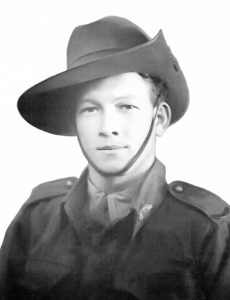
Their accommodation was about 200 yards from the coalmine. The POWs lived in barracks, which Deveson described as being of fair construction but infested with bugs, lice and other insects
There were regular beatings of POWs by Japanese NCOs and guards under the directions of Camp Commander Lieutenant Suematsu and Camp Sergeant Major Iwonuma. These beatings were always severe and carried out with pieces of wood or rubber hosing and bare hands were carried out daily. If the POW being beaten fell to the ground then several Japanese guards would kick him.
He personally witnessed on two occasions Suemastsu strike an English Sgt Major with his sheathed sword until he fell to the ground. In the winter of 1944 three Dutchmen were made to kneel in the snow, completely naked whilst Japanese guards poured buckets of cold water over them for approximately one hour.
On other occasions he personally witnessed Sgt. Major Iwonoma, under instructions from Camp Commandant, take active part in beatings. He saw him severely beat two English POWS with sticks until they fell to the ground and then kick them. After this he threw each prisoner into the fishpond at the camp. It was winter and very cold. He described Iwonuma as being about 25 years of age, well educated and able to speak some English.
Rations were poor and mostly consisted of three issues of raw rice per day, each issue being less than a cupful.
The mine was administered by Japanese civilians and POWs worked under their orders. Two of these civilians were nicknamed ‘The Pig’ and ‘The Bull’. ‘The Pig’ was about 6 feet tall, well built, about 13 stone and aged about 30 years. ‘The Bull’ was about 6’1” tall, sturdy build, about 14 stone and aged about 32 years. The civilian guards administered beatings with sticks and sometimes bare hands.
The mine conditions were not safe. The tunnels were not properly timbered and in certain parts there was not sufficient timber and in other areas the timber was rotten with decay. After blasting operations no inspection was made to ensure the tunnels were safe before POWs were sent back to work where blasting had taken place.
During those 2 ½ years there were five serious falls in the tunnels. An English POW received injuries resulting in a leg amputation; during another fall a Dutch POW sustained injuries requiring an arm amputation and several POWs sustained broken legs, arms and ribs during other falls.
12 months after arriving, Deveson saw Red Cross supplies arrive for the first time. The Japanese regularly purloined them and he regularly saw the Camp Commandant Lt. Suematsu and NCOs eating contents of Red Cross parcels.
When Red Cross parcels were distributed, it was not one for each POW; instead they would receive one parcel for 6 to 8 POWs. POWs were going to work barefoot when Red Cross boots were in the camp store.
Amongst the POWs Deveson wrote of an Australian named Pte IRWIN (Christian names possibly George Arthur) who was ill on several occasions and unable to work. Deveson thought him to be mentally unbalanced and afraid of working in the mines.
During summer 1944 as the men returned from working night shift Irwin was found absent when counted by the NCO and the POWs confirmed he had not been with the work party.
The following day during afternoon parade the men were informed by the Camp Commandant that Irwin had escaped, been re-captured and then again attempted to escape and was shot by the Japanese.
The following day Roy Deveson was informed by an English officer, Lt. Humber that the two British orderlies working in the camp hospital informed him they had seen Pte Irwin’s body which had numerous bayonet wounds and that his death had resulted from such wounds.
Read Roy Deveson’s complete Affidavit below:

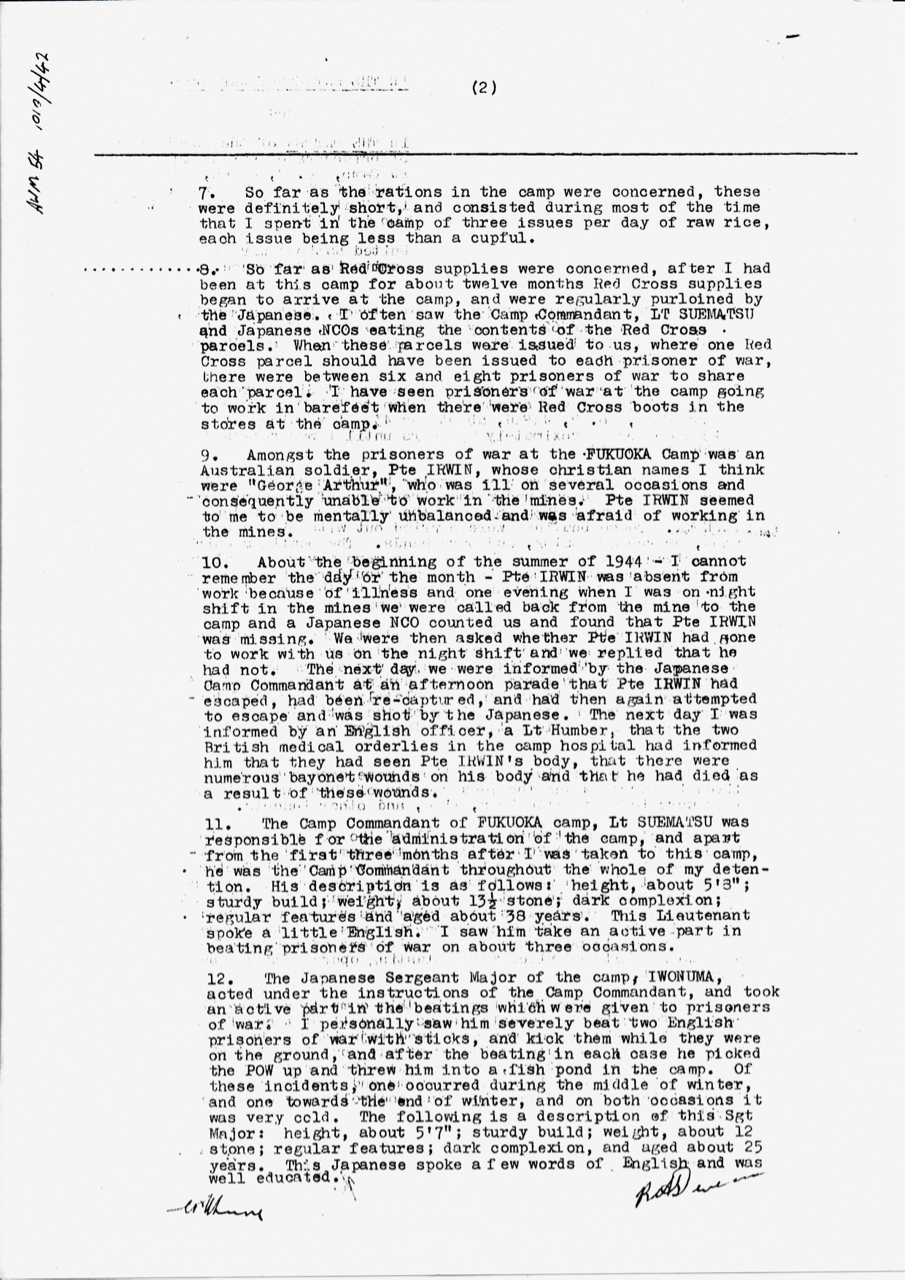
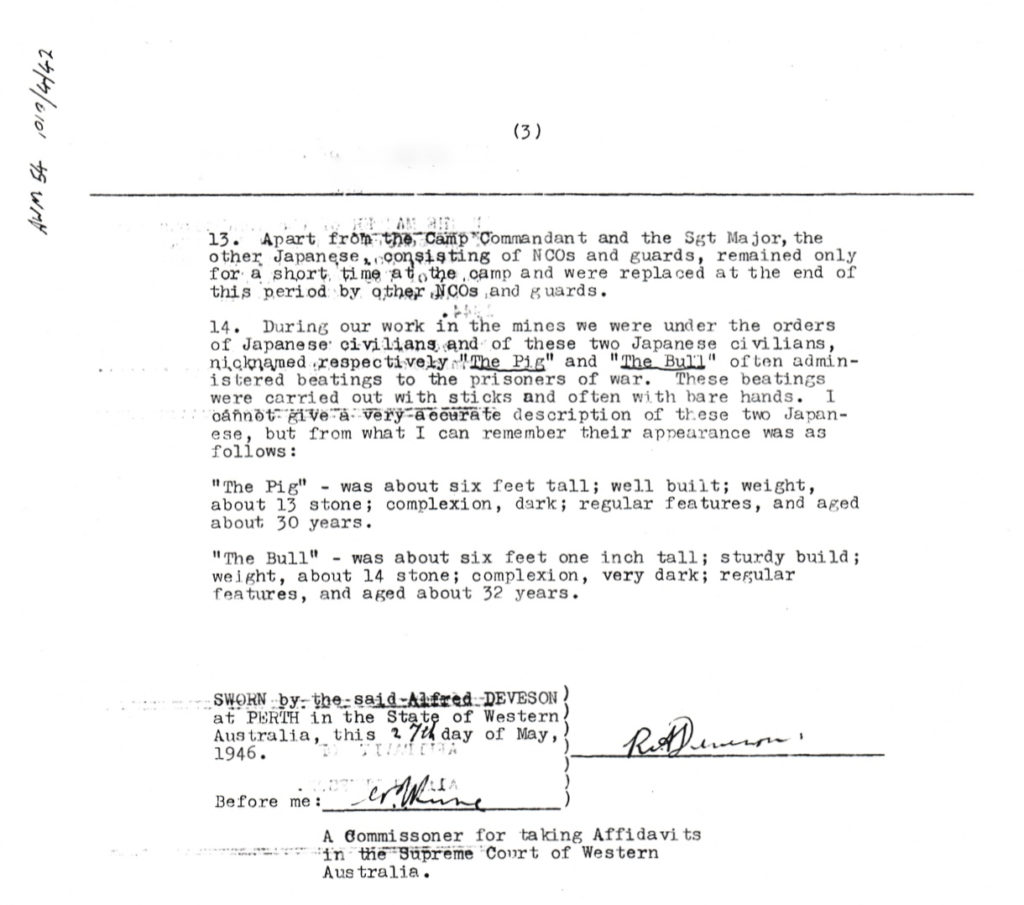
We gratefully acknowledge www.mansell.com for the following photos:
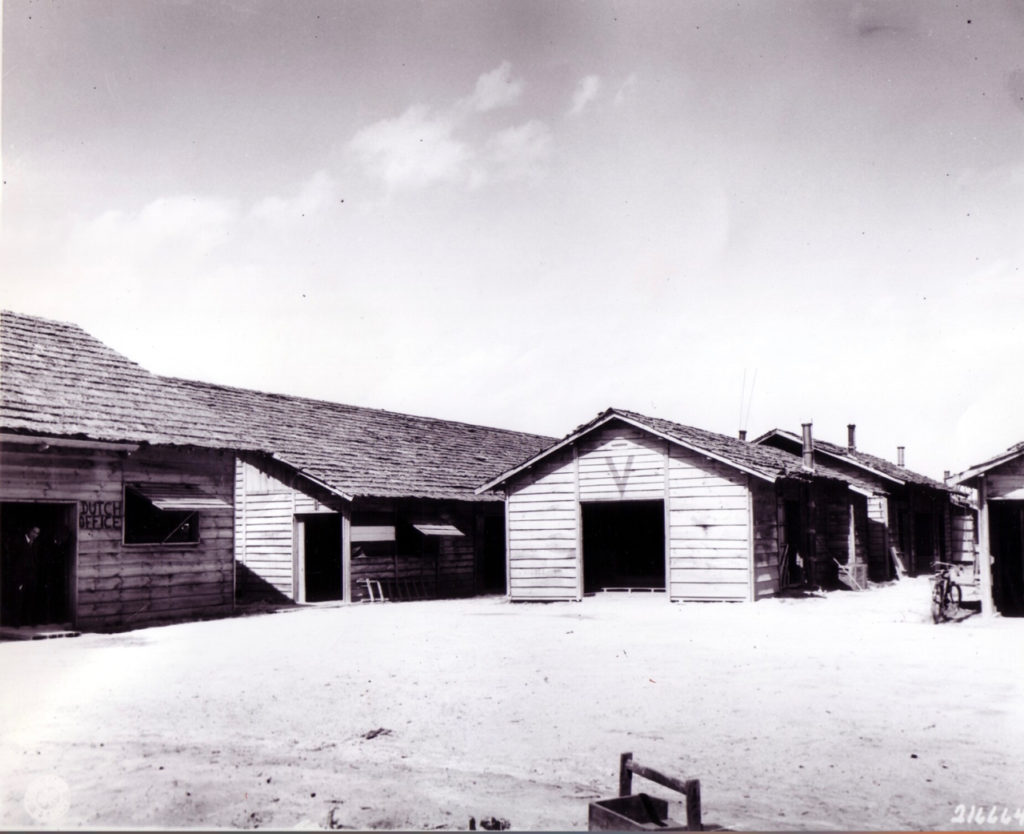
Above: Exterior and below is interior of POW Camp.
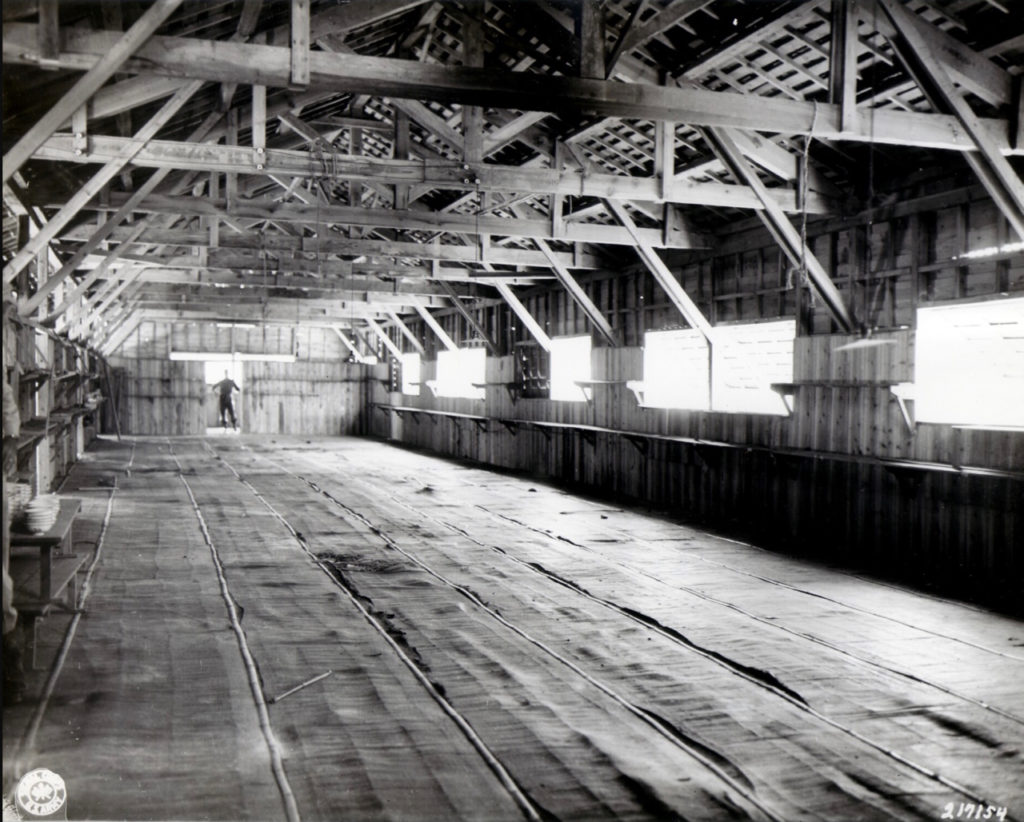
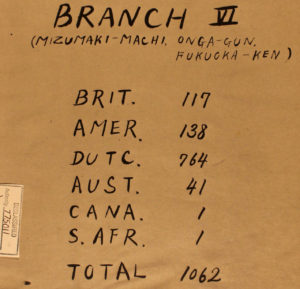
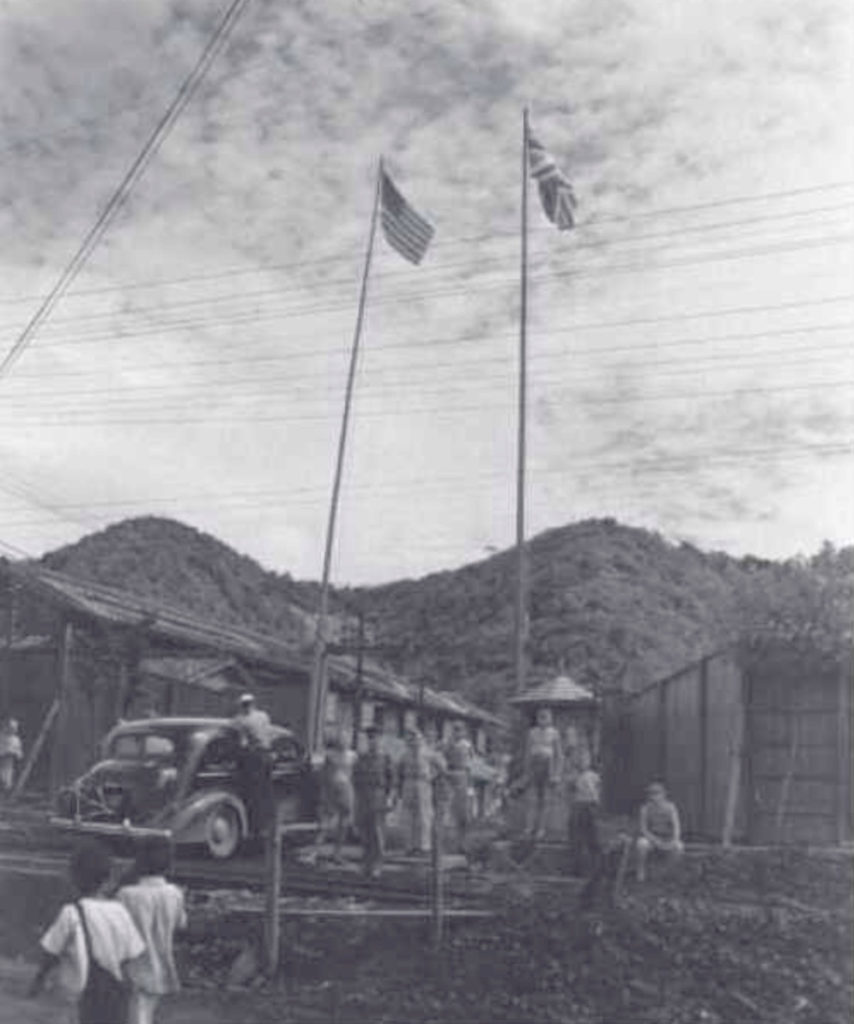
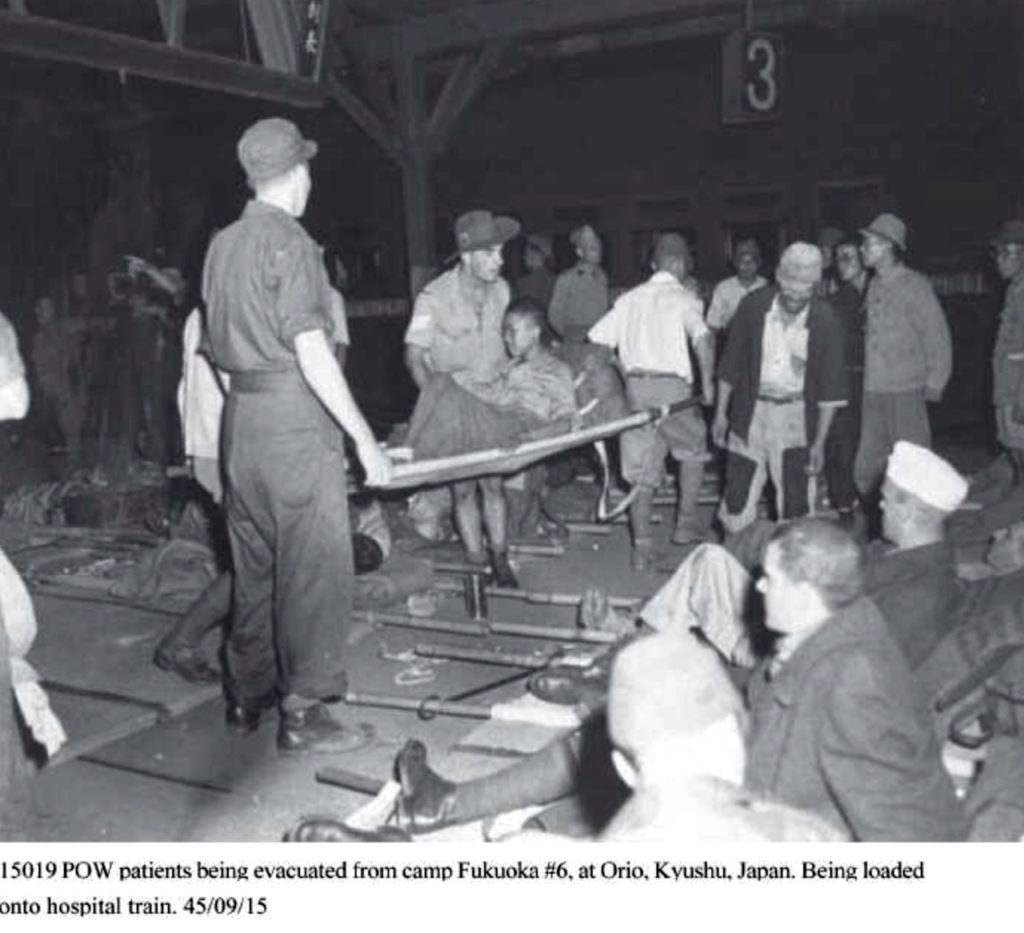

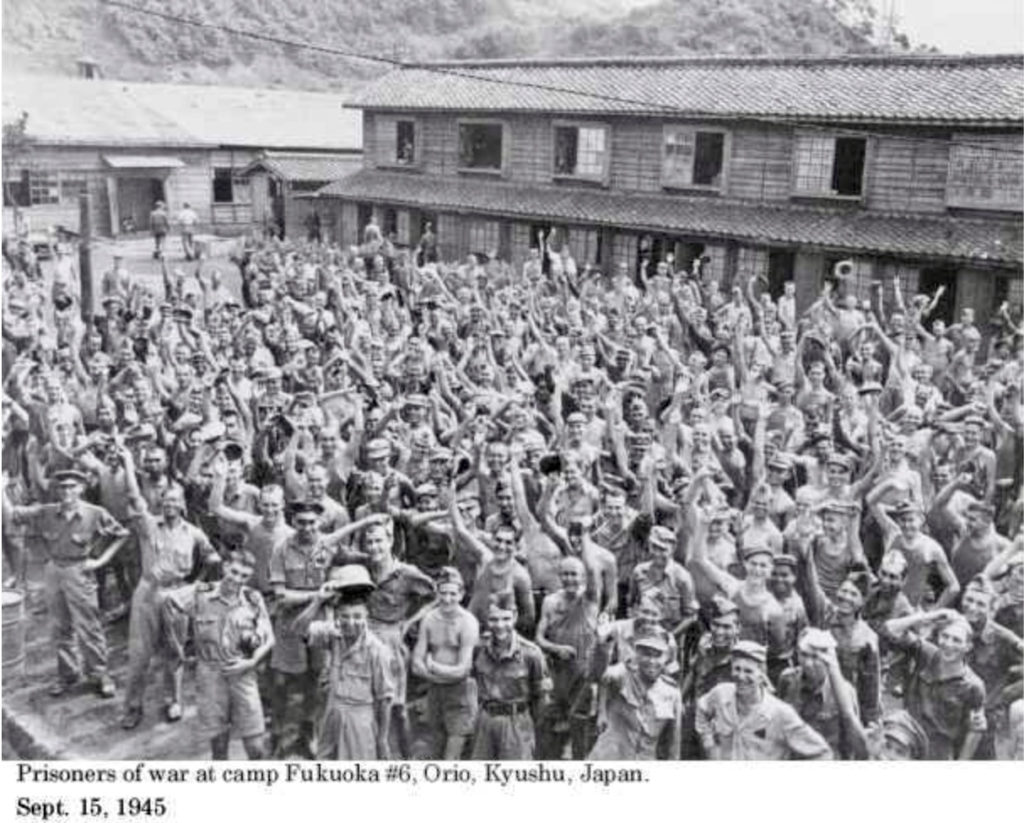
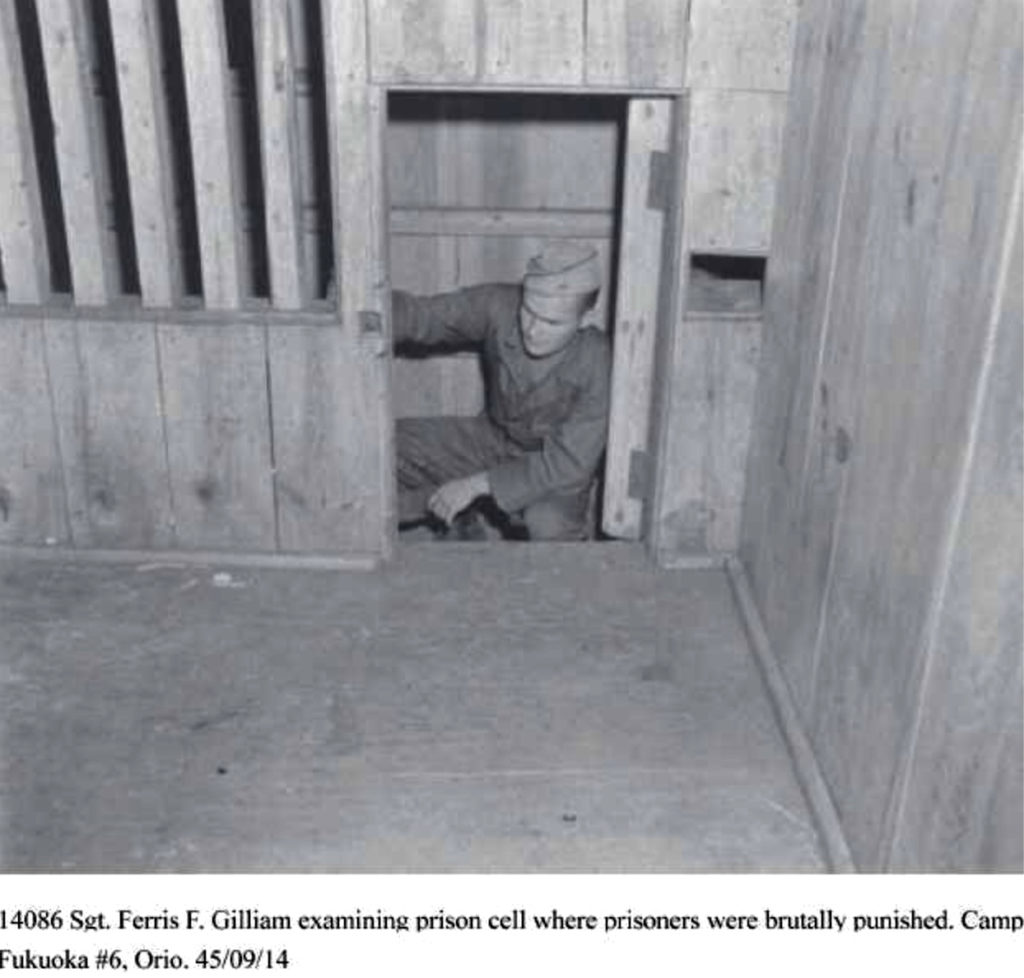
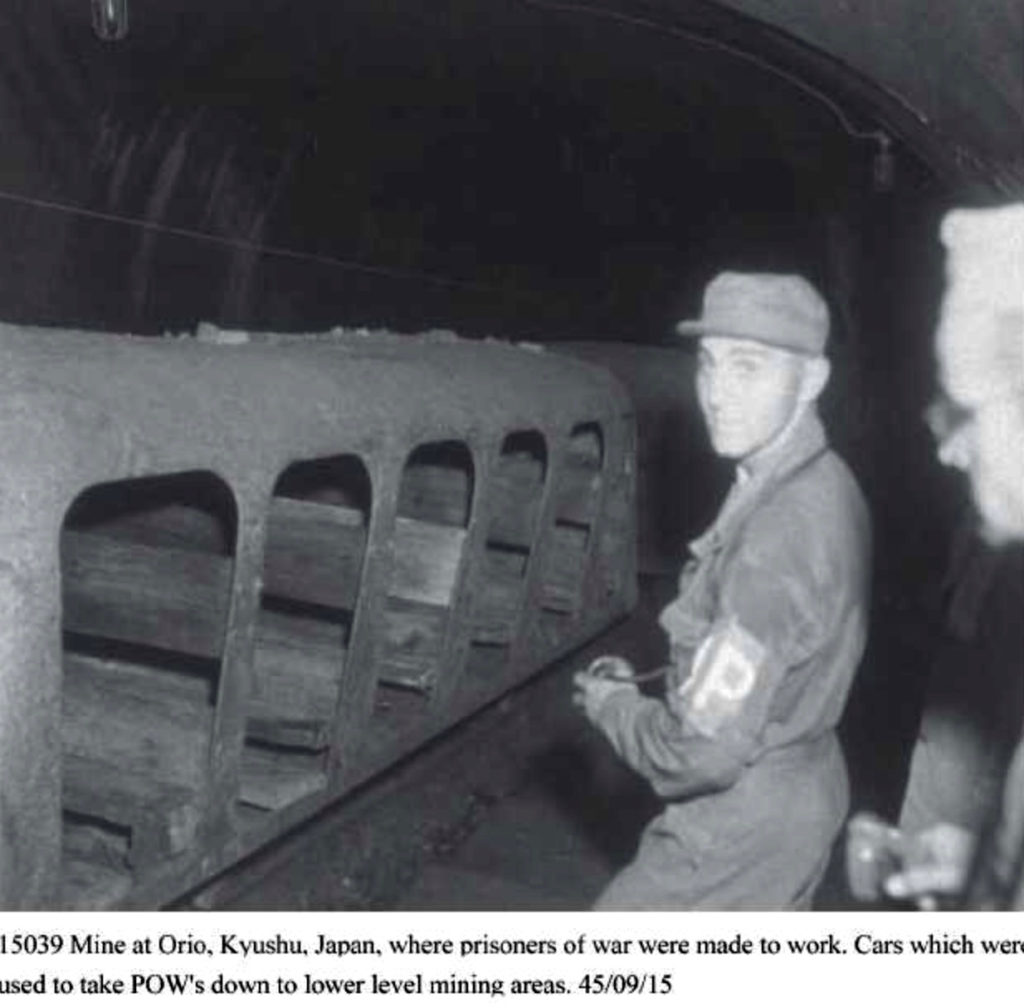
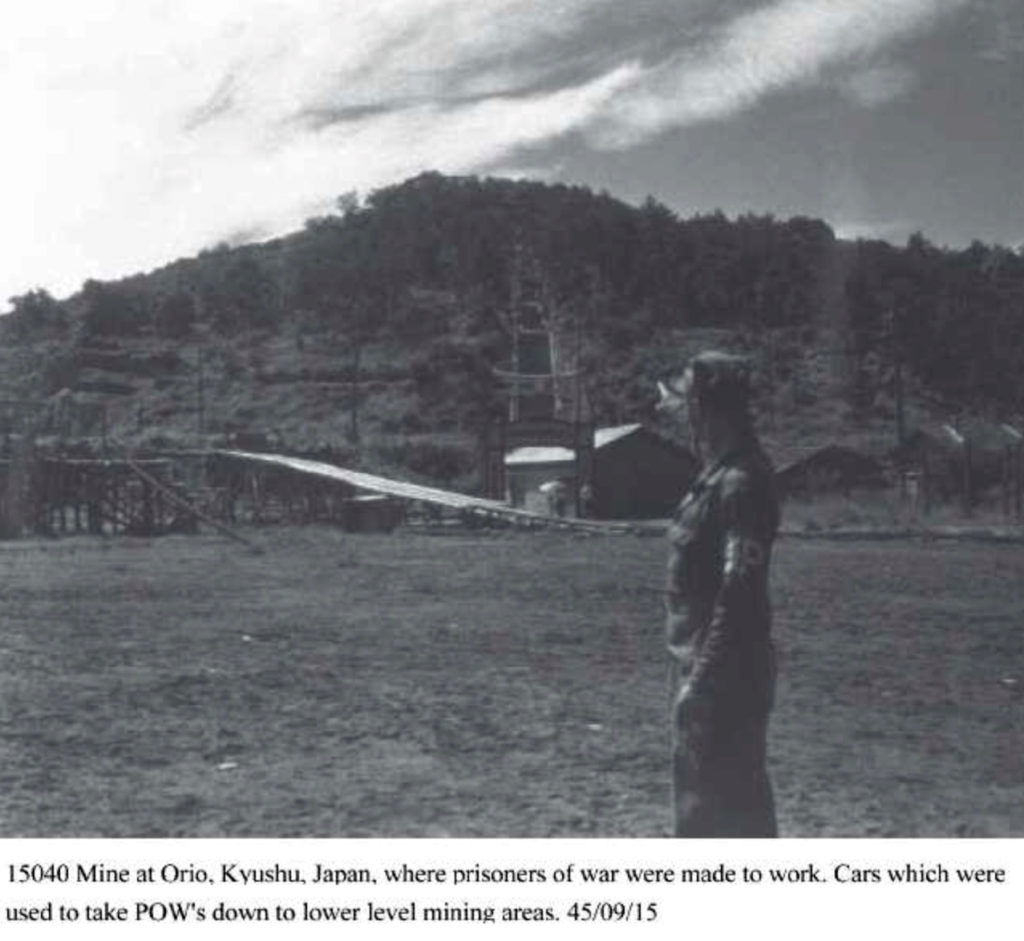
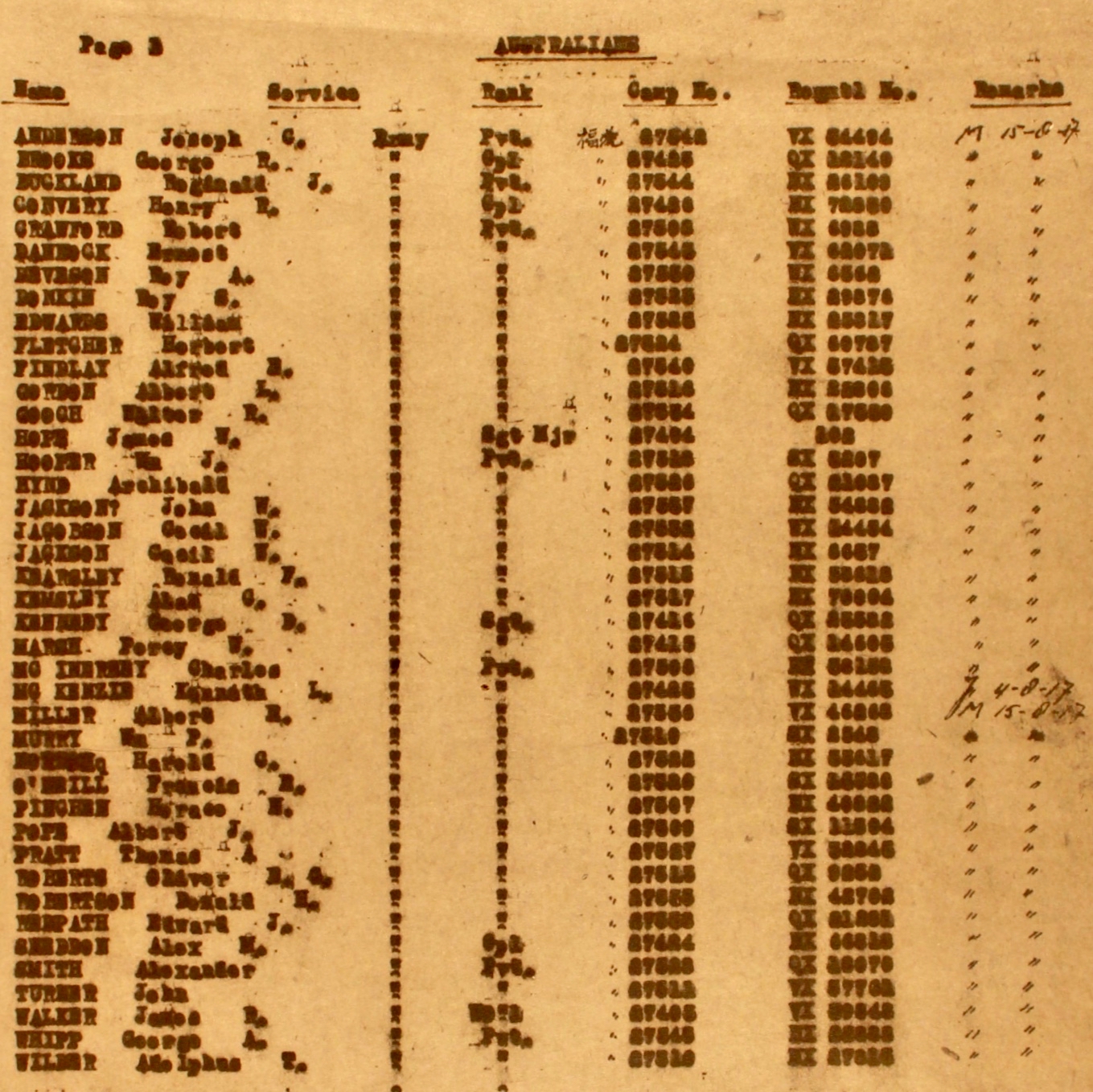
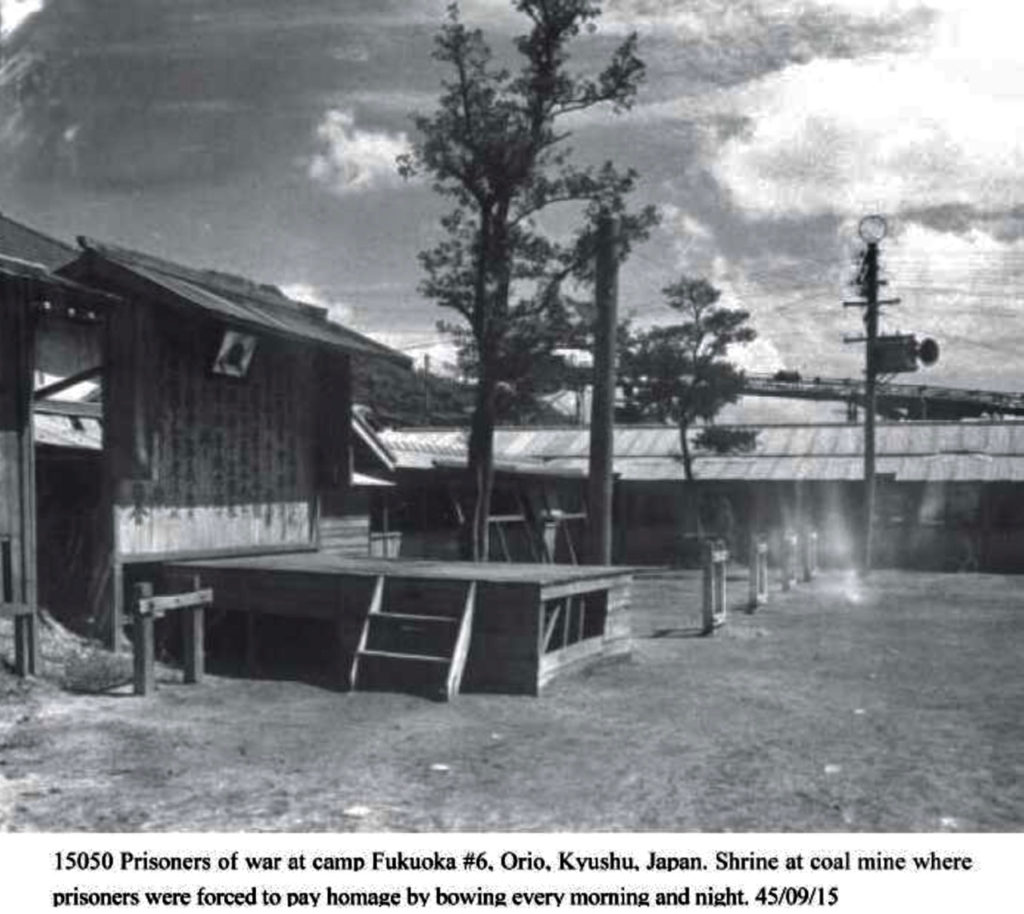
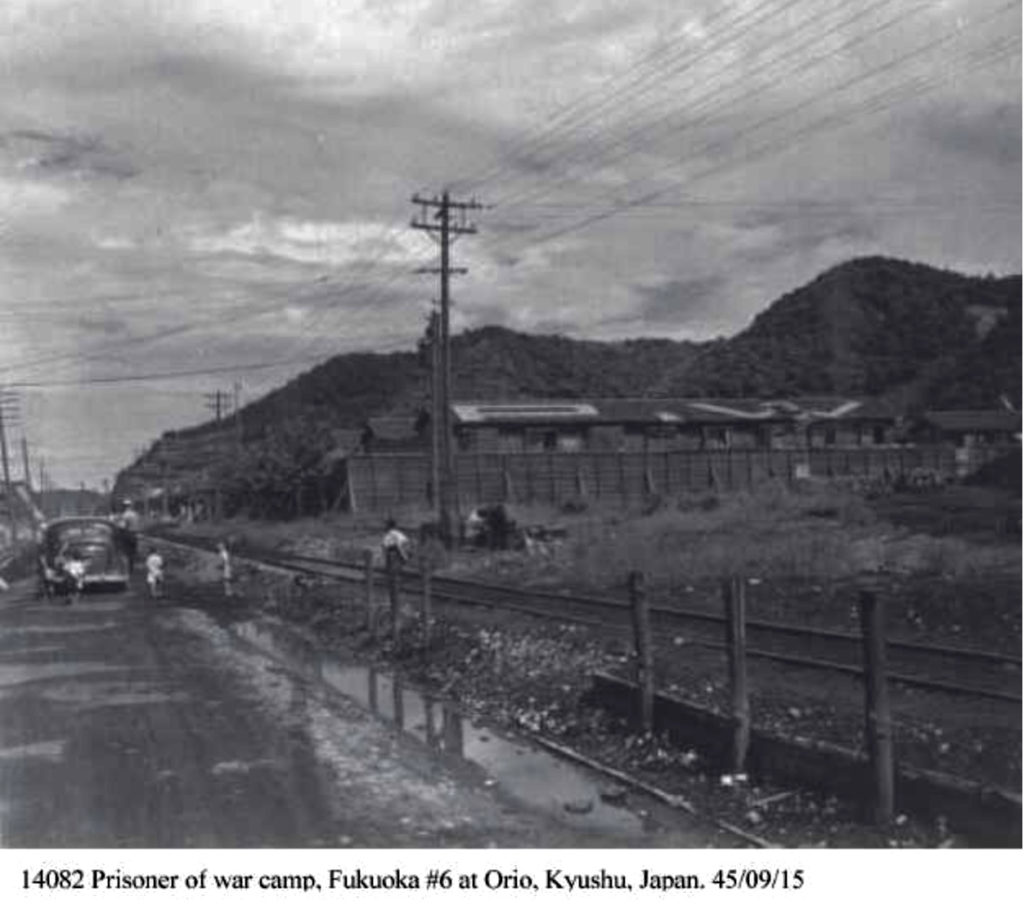
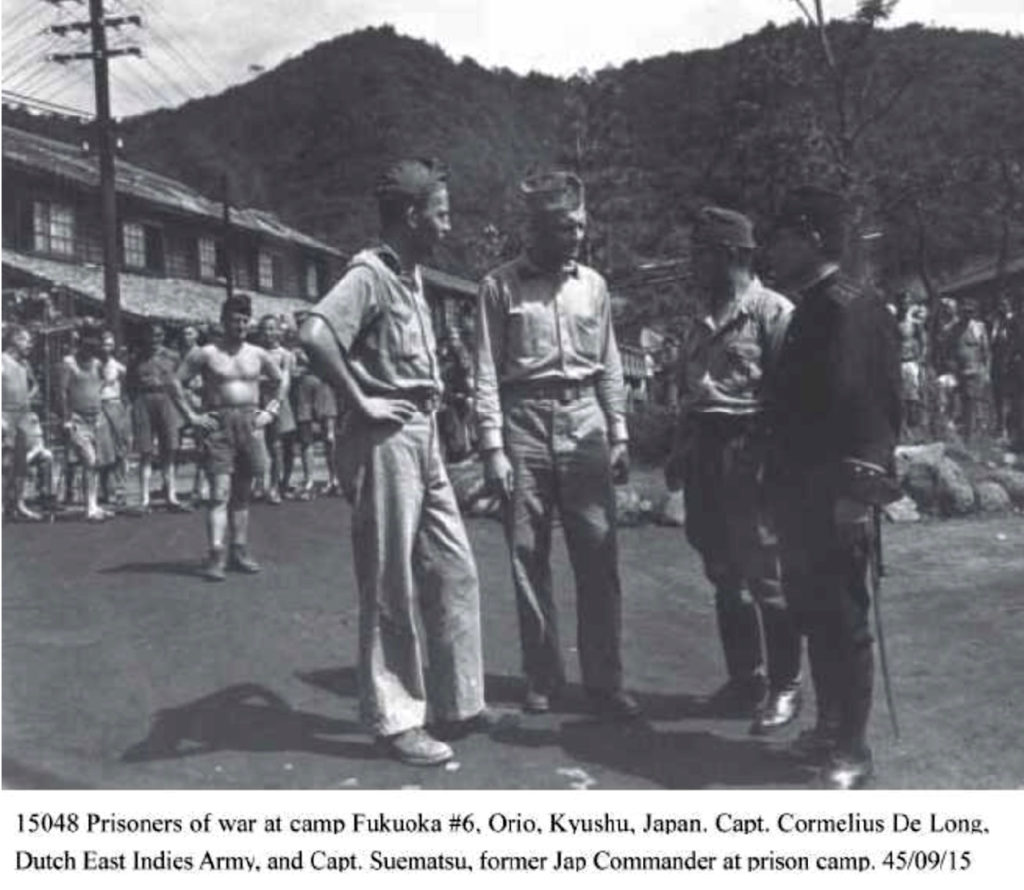
Below: POWS photographed at camp when the war ended and prior to their departure as free men.

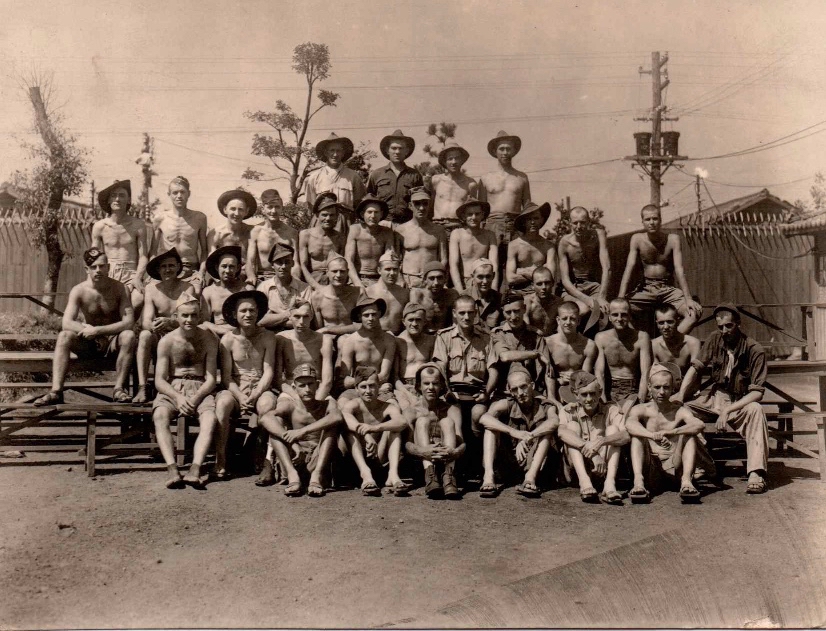
These photographs have been passed onto us from Grahame McLaughlan, whose father was an English POW at this camp (Barrack 6). You can see the illustration depicts the same buildings shown above.
